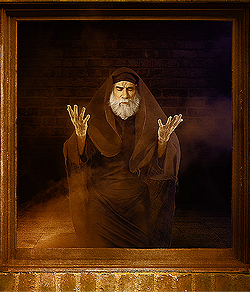Rhythmic
- drbuddyyoung
- Sep 9
- 3 min read
Updated: Sep 11

The 265 Journey
Outline Week 36
Daniel 6:10
When Daniel knew that the document had been signed, he went to his house where he had windows in his upper chamber open toward Jerusalem. He got down on his knees three times a day and prayed and gave thanks before his God, as he had done previously.
To develop a daily rhythm in our prayer life, we can glean insight from the life of Daniel, which teach us
The Habit of Prayer . . . as he had done previously. Daniel spent most of his life in Babylonian captivity. They tried to indoctrinate him in their manners, customs and religion. He could had easily succumb to their continual efforts to change him, but he never forgot or forsook his Hebrew heritage. The pattern of prayer which he demonstrated in his adult life was developed when he was an adolescent. His habit of prayer that "he had done previously" remained with him through out his whole life.
The Habitat of Prayer . . . he went to his house where he had windows in his upper chamber open toward Jerusalem.
Daniel had a place of pray. His upper chamber was his heavenward habitat. It was here that he would routinely withdrawal from society into solitude. He would seek his Sovereign. Here he could pull away and pray. Here he could converse unhindered with the Lord. Often it is difficult to find a secluded place to pray. Daniel had a place, we may not. But, the place of prayer is not as important, as the practice of prayer. We can pray anywhere and anytime, but we must pray. It is our attitude, not the arena of prayer, that brings us into His presence. When we learn how to withdrawal in prayer, then wherever we are can become our "upper chamber". The habitat of prayer is wherever you can meet the Lord.
The Habits of Prayer He got down on his knees three times a day and prayed and He got down on his knees and prayed and gave thanks before his God.
We are given insight into the distinct disciplines that directed Daniel's prayer life. He had formulated a plan of pray. Three times a day he would turn aside to pray. His actions corresponded to the Jewish tradition to pray in the morning, the afternoon, and in the evening (Ps 55:18). He learned this pattern as a young boy and continued it into adulthood. It was difficult to practice his faith in captivity. There was no temple to attend or sacrifices to observe, yet in facing Jerusalem and keeping the custom of praying three time a day, he kept the foundations of his faith alive.
Not only did he have a pattern of prayer, but a posture of prayer. As we are told "He got down on his knees . . . and prayed." Here was a posture of humility. Bowing down each day put him a posture that honored his Lord and King above himself. Here he expressed his dependence upon the divine. Kneeling in prayer, he acknowledged one who is greater and grander then himself.
Notice also in the text the phrasing of his prayer. He "gave thanks before his God." This seems like an odd time to give thanks in prayer. We are told, "the document had been signed" that would condemn to death anyone who prayed to someone or something other than the earthly king. Logically, Daniel should have either not prayed, cried out for the Lord to reverse the decree, or pleaded for protection, but he didn't. He gave thanks, rather than gripe about his situation. His praise for his God was an essential element in his petition. He was thankful for what he was given, rather then troubled by what he might get. As David said: "I will bless the Lord at all times; his praise shall continually be in my mouth. (Ps 34:1), or as Paul writes, "give thanks in all circumstances, this is the will of God in Christ Jesus for you." (1 Thess 5:18). So next time trouble comes, consider giving thanks.
For Further reading:



Comments